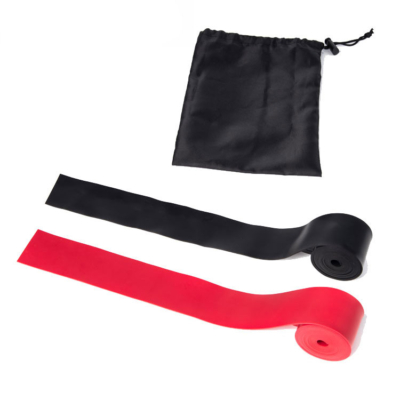Benefits of Using Resistance Bands in Physical Therapy
Recover strength, improve mobility, and enhance recovery—anywhere, anytime.
Physical therapy is essential for regaining function after surgery, injury, or chronic conditions. Among the many tools used in rehabilitation, resistance bands stand out for their versatility, safety, and effectiveness.
No products found which match your selection.
What Are Resistance Bands?
Resistance bands are stretchable elastic bands made from latex or rubber. They’re used to create external resistance during exercise, helping to activate and strengthen specific muscle groups.
-
Available in various resistance levels (often color-coded)
-
Lightweight and easy to carry
-
Come in different shapes and thicknesses for various needs
Types of Resistance Bands
-
Therapeutic Stretch Bands
Soft, flat bands for early-stage rehab. Ideal for seniors or individuals recovering from surgery. -
Loop Bands (Mini Bands)
Continuous circle design. Best suited for hip, thigh, and glute training. -
Tube Bands with Handles
Designed with grips for upper-body exercises. Helpful for users with reduced hand strength. -
Figure-8 Bands
Shaped like an “8,” useful for isolated and targeted muscle movements.
Benefits of Resistance Bands in Rehabilitation
-
1. Versatile and Customizable
Resistance bands can target nearly any muscle group. They adapt easily to different goals, from gentle mobility to full-body strengthening. -
2. Portable and Convenient
Lightweight and compact, resistance bands are perfect for home workouts, office routines, or travel. They promote consistency in therapy by being so easy to use. -
3. Adjustable Resistance
From light to heavy tension, bands support gradual progress. As patients regain strength, they can move up to higher resistance levels safely. -
4. Improved Range of Motion
Bands encourage full joint movement with controlled resistance. This helps restore flexibility, especially after injury or surgery. -
5. Builds Strength Without Overloading Joints
Bands provide resistance without the weight load of dumbbells or machines. This makes them ideal for protecting joints while strengthening muscles. -
6. Affordable and Accessible
Resistance bands are much more cost-effective than large gym equipment. They’re a smart option for both physical therapy clinics and personal home use. -
7. Safe for All Fitness Levels
Whether you’re a beginner, senior, or someone with limited mobility, bands offer a gentle yet effective training option that can be modified as needed.
How to Incorporate Resistance Bands into Physical Therapy
Upper Body Exercises
-
Bicep Curls → Stand on the band, hold handles with palms up, and curl toward your shoulders. Strengthens arms.
-
Tricep Extensions → Anchor band behind, face away, and extend arms forward. Works the upper arms.
Lower Body Exercises
-
Squats → Place loop band above knees and perform squats. Adds tension to glutes and thighs.
-
Leg Presses → Lie down, loop band around feet, and push forward. Mimics machine press without heavy equipment.
Core and Stability Exercises
-
Standing Rotation → Anchor band at waist height. Rotate torso away to train obliques and improve balance.
-
Seated Abduction → Sit with band above knees. Push knees outward to strengthen hip stabilizers.




